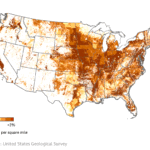
The following is a 3:30 read using 6 sources
The sense of smell is the least understood mechanisms of all the senses. There are about 400 olfactory sensors that can take in hundreds of scent molecules, which trigger hundreds of nervous system responses. The olfactory glands are in a unique position that is associated with memory in the brain. As we develop, each scent and the association with whether it’s a positive or negative smell is learned. Because of the position of the olfactory nerves in the brain, smell is the strongest sense connected to emotion. Scent is mostly learned by forming connections of positive or negative smells and it’s connection to experiences.
Becoming a perfumer takes three years of continuing education, and many don’t make it through. In the first year, students memorize thousands of scents and chronicle each one. For those who graduate from a perfume program, about seventy to eighty percent work in “functional perfume” rather than cosmetic or luxury perfumery.
One of the largest users of perfume, Procter & Gamble, produces over 20 million pounds of perfume annually and hires hundreds of perfumers around the globe. It’s this team that sets the tone for global scent trends and regional preferences.
When P&G makes lavender-scented products, the scent profile actually varies from country to country. Europeans have an accurate association with what the lavender flower smells like. In the USA, lavender products smell more “creamy and caring.” In Asia, lavender has a more soapy scent. In Asia, scents are much less “sweet” than those found in American products, which matches the region’s less sweet desserts and a more subtle palate. For example, “caramel” would be considered too sweet for the Asian market.
According to a P&G perfumer, after 9/11, global scent preferences shifted toward those associated with warmth and safety. Worldwide, the scent of vanilla took off, especially when combined with lavender, like in “Downy Calm.” In 2022 and 2023, the response to COVID led to scents associated with hygiene, safety, and cleanliness. The crispness of cleaning alcohol, watery freshness, and sterile, astringent scents like “tea tree” and “eucalyptus” gained popularity. Since COVID, there’s been an increase in scents that are “watery,” like fresh rain, ozone, and fresh linen. Today, the “surgical mask” freshness is associated with clean, a complete departure from the days of vanilla.
Today, perfumers are noticing trends focused on seeking joy and bliss through scent. This is most commonly tied to fruit flavors, especially red fruits like cherry and strawberry, and tropical fruits like guava. P&G has observed that people are looking for self-expression, creativity, and joy through scents.
Bolder scents that are associated with a color like red signify a cultural shift toward a willingness to experiment and a desire for positive experiences. Compared to the more generic brands produced by P&G, a slightly more high-end brand would be Mrs. Meyer’s, which focuses on being more natural and less chemical-based.
If P&G is focusing on “strawberry,” Mrs. Meyer’s is promoting “tomato vine” as one of its main summer scents. The red fruits is a surprising shift not just for perfumes but especially in home products, where fruitiness is typically not associated with “clean and fresh.” However, there’s an uptick in buyers gravitating toward “coconut” and other relaxing, fruity, and fun scents.
Scent continues to evolve as both a personal expression and a cultural signal. From post-crisis comfort to happy self-expression, fragrance trends reflect shifting emotional landscapes. As global preferences diversify, perfumers are keep an eye on the pulse of what people crave from the scents they buy.


